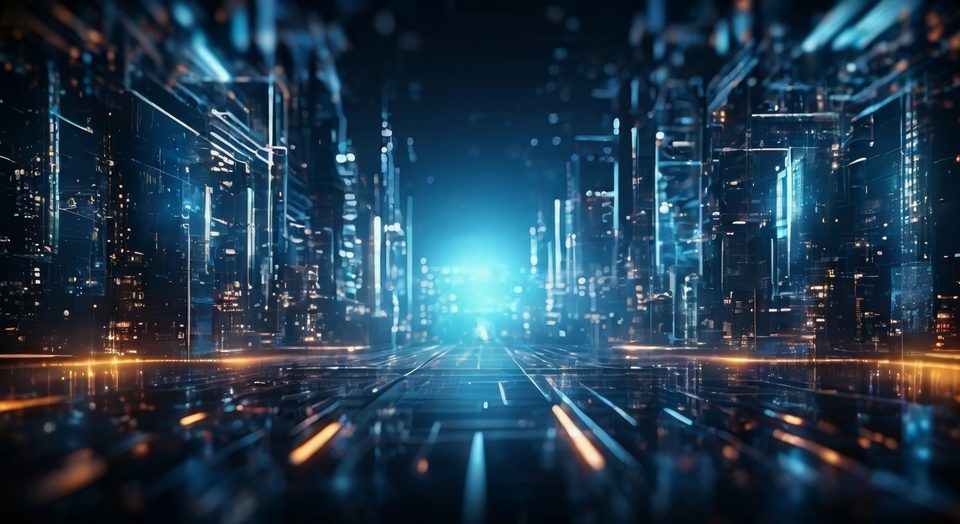Why AI and the Energy Sector are the New Power Duo
In today’s rapidly evolving global landscape, renewable energy stands as a beacon of hope for a sustainable future. As the detrimental effects of climate change become increasingly clear, the world is shifting from traditional fossil fuels to cleaner, more sustainable energy sources. The International Renewable Energy Agency (IRENA) reports a global increase of 7.4% in renewable energy capacity in 2020, underscoring its growing importance.
However, the journey towards a renewable-centric energy grid does not come without its hurdles. The nature of renewable sources like solar and wind in that their patterns are unpredictable, leading to fluctuations in energy production, meaning challenges are recurrent and sporadic. Moreover, incorporating large volumes of renewable energy into power grids originally designed for stable fossil fuel sources presents significant technical and logistical challenges. So how does AI address these challenges? With its ability to handle vast amounts of data at unprecedented speeds, AI can offer solutions that were previously deemed unattainable.
Applications of AI in Renewable Energy
- Predictive Maintenance: AI can analyze data from sensors on equipment and infrastructure to predict maintenance needs, reducing downtime and extending the lifespan of energy assets.
- Energy Storage Optimization: AI can enhance the efficiency of energy storage systems by predicting the best times to store and release energy, balancing supply and demand more effectively.
- Demand Response Management: AI algorithms can forecast energy demand fluctuations and enable utilities to adjust supply dynamically, reducing energy waste and costs.
- Smart Grid Management: AI can integrate with smart grid technologies to optimize electricity distribution, preventing outages, and minimizing energy losses during transmission.
- Consumer Energy Usage Insights: AI can provide consumers with personalized recommendations to reduce energy consumption and costs based on their usage patterns and preferences.
- Renewable Energy Site Selection: AI can assist in identifying optimal locations for new renewable energy installations by analyzing geographical, environmental, and economic data.
- Energy Market Analysis: AI can predict market trends and price fluctuations, helping energy producers and consumers make informed decisions and improve financial planning.
- Carbon Emission Reduction: AI can optimize processes in industrial settings to reduce carbon emissions, contributing to environmental sustainability goals.
- Integration of Distributed Energy Resources: AI can manage and integrate various distributed energy resources, such as solar panels and wind turbines, into the main grid, ensuring efficient and reliable energy supply.
- Enhanced Weather Forecasting: AI can provide more accurate and granular weather forecasts, helping energy producers plan and adjust renewable energy output more effectively.
3 Key Benefits of AI in Renewable Energy
The integration of AI in the renewable energy sector offers a myriad of benefits, completely revolutionising the production, management, and consumption of energy. With the right application of AI capabilities, energy companies will see significant improvements in operations and efficiency:
- Higher efficiency – AI can take up a multitude of tasks and can execute them quickly with more accuracy. By analysing immense datasets and making real-time adjustments, AI is equipped to ensure that renewable sources are utilised to their full potential.
- Cost reduction – AI monitors various metrics of equipment used in energy production, and can spot small changes that might indicate potential future issues. This early detection allows energy companies to take preventative measures, ultimately leading to lower maintenance costs.
- Improved sustainability – AI and machine learning allow businesses to better understand their environmental impact and take actions to minimize it, such as managing energy usage more efficiently and reducing harmful emissions.
AI’s Impact on Energy Workers
Globally, the green transition could create 30 million jobs in clean energy, efficiency and low-emissions technologies by 2030. – World Economic Forum, The Future of Jobs Report 2023
This projection from the World Economic Forum underscores the transformative potential of the green transition in the energy sector. As AI and other advanced technologies continue to drive innovation and efficiency in clean energy, efficiency, and low-emissions technologies, there is a promising outlook for job creation.
The estimated creation of 30 million jobs globally by 2030 highlights the substantial opportunities for energy workers to transition into new roles and industries. While AI may automate certain tasks and processes, it also has the potential to enhance productivity, unlock new markets, and spur the development of novel solutions.
Therefore, the impact of AI on energy workers is likely to be multifaceted, with opportunities for upskilling, reskilling, and adapting to emerging job roles in a rapidly evolving energy landscape.
Final Thoughts
The relationship between AI and the energy sector signifies a pivotal shift towards a sustainable future amidst the pressing challenges of climate change. Through predictive maintenance, energy storage optimization, and enhanced grid management, AI offers tangible solutions to enhance efficiency, reduce costs, and mitigate environmental impact.
INSIGHTS
Related Articles
The Top Tech Trends to Watch as We Approach 2025
From improving operational efficiency to enhancing customer experiences, Al has the potential to reshape the entire landscape of banking as we know it.The AI Prescription: How Gen AI is Transforming Healthcare
From improving operational efficiency to enhancing customer experiences, Al has the potential to reshape the entire landscape of banking as we know it.Why 85% of AI Projects Fail
A staggering 85% of AI projects fail to deliver on their promises, leaving many organisations to grapple with disappointing outcomes.
Never miss a story







